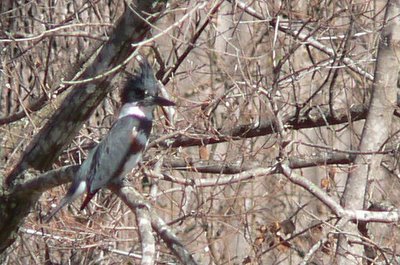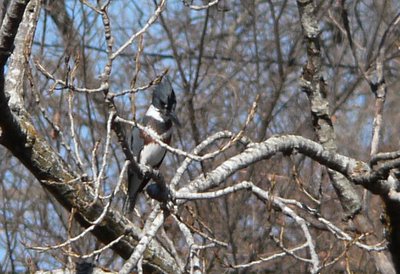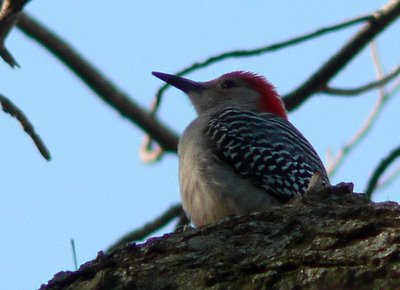Downstream from the dam, Barton creek flows a quarter mile before it empties into the river. In the winter, the creek downstream from the pool is a good place to go birdwatching. There aren't too many people around on a winter day, and you can see a surprising variety of bird life.
Today I parked my car near the so-called sunken garden, a small circular rock structure built during the depression around the most downstream of the springs, one that does not feed into the swimming pool. I am kinda nostalgic about it. When I was a college student, the rock walls of the sunken garden were normally allowed to fill to the top, and sometimes--I remember it as always being in the moonlight--my girlfriend and I would go skinny dipping there. The place was a little less urban then than now, but there was still a possibility of being hauled off to jail. The recollection of adventurously swimming naked in a clear spring fed pool under a full moon when you are young is intrinsically nostalgia-inducing, though this is possibly a variant of the same memory thing I mentioned earlier. Actually, it was cold as hell, even in summer, but I, uh, barely recall that part.
The water in the sunken gardens is no longer kept high enough to swim in, and there is a fence around it, and a sign in English and Spanish tells us that this is a home of the rare and endangered Barton Creek salamander, as in fact it is. So is the main swimming pool.
I had expected to find ducks on my bird walk, plus the mute swans that have lived here for decades. But I did not expect to find two species of kingfisher peacefully sharing the territory. A belted kingfisher and a green kingfisher were both at work, and both seemed successful in their fishing, in the same 50 yard stretch of creek below the dam. I couldn't get very close to either kingfisher, so the quality of the photos is not the best. But I've never before seen 2 kinds of kingfisher in the same place. I suspect the dry weather has pushed them into this coexistence.
Here's the belted kingfisher, a female, perched on a tree across the creek

Another view of the same kingfisher

And here's a female green kingfisher, on my side of the creek, but still too far away for a good photo. Sorry.

A red-bellied woodpecker proved a lot easier to get close to than the kingfishers

An American goldfinch, a male, in brush below the woodpecker

This is a least grebe, which, like the green kingfisher, is an uncommon bird around Austin. I was surprised to find it. Again, not that great a photo, but it was the best of ten or so I tried to take. Grebes dive very quickly, so I had lotsa pictures of the surface of the water, no grebe, plus two or three of a grebe with its head in the water--and this one.

Tomorrow I will post pictures of the ducks and the swan.
No comments:
Post a Comment